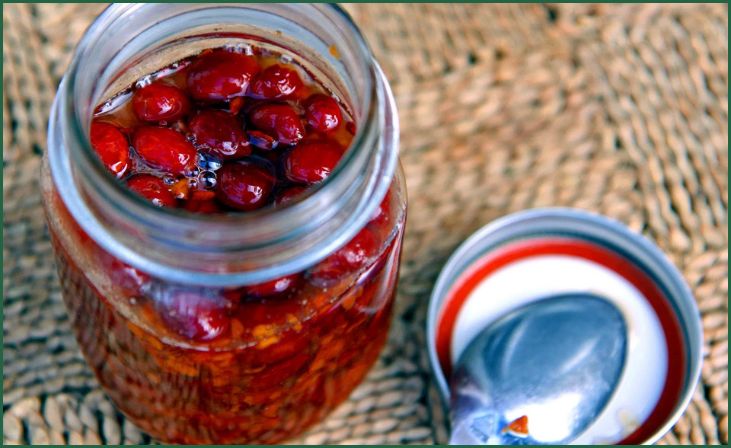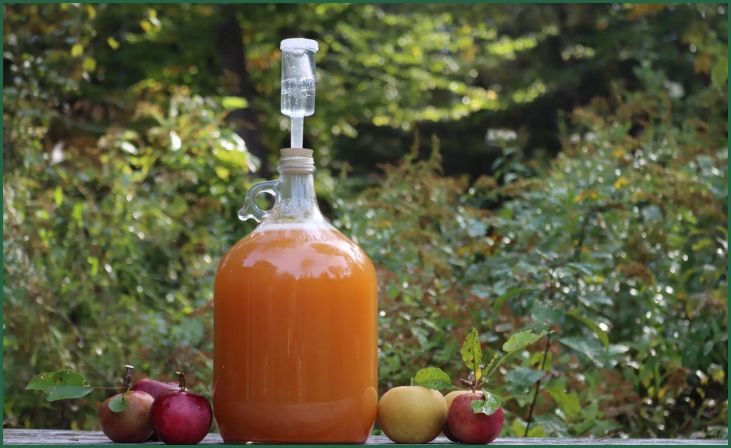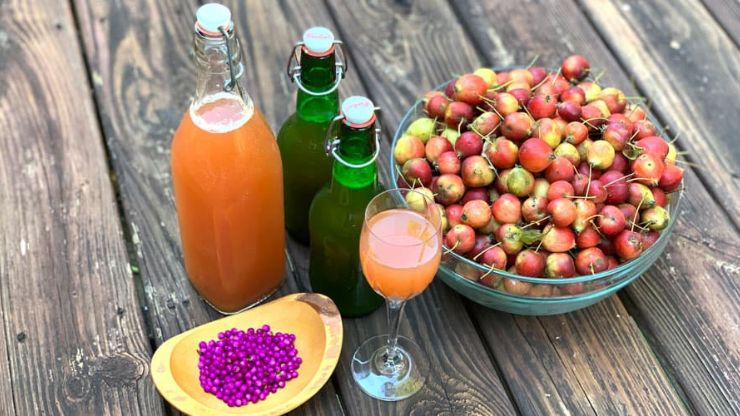Welcome to the enchanting realm of Fermented Crabapple Cider, where the bounty of nature intertwines seamlessly with the finesse of human craftsmanship. In the pages of this article, we embark on a captivating journey into the intricate world of crafting this exquisite elixir. Our exploration takes us through the historical tapestry that weaves the story of Fermented Crabapple Cider, unravels the delicate dance of fermentation, and ultimately leads us to the anticipation of the delightful taste that awaits those who savor its magic.
This beverage, born from the marriage of nature’s gifts and human ingenuity, holds a rich history waiting to be uncovered. Each sip carries the echoes of traditions passed down through generations, making Fermented Crabapple Cider not just a drink but a living testament to the cultural tapestry it is woven into.
As we delve deeper, the spotlight turns to the alchemy of fermentation. The process is an intricate dance where yeast and sugars come together, orchestrating a transformation that elevates humble ingredients into a symphony of flavors. It’s a journey into the microscopic realm, where the magic unfolds, giving birth to the effervescence that characterizes every drop of Fermented Crabapple Cider.
Table of Contents
ToggleFermented Crabapple Cider Unveiled: A Journey into Craftsmanship and Natural Splendor

Embark on a mesmerizing journey as we unveil the enchantment behind Fermented Crabapple Cider, where every sip narrates a tale of meticulous craftsmanship and the inherent splendor of nature. Join us as we traverse through the intricate details that define this extraordinary elixir.
Also Read:- Fermentation’s Book Review
The Art of Fermentation: Transforming Ingredients into a Symphony of Flavors
At the heart of Fermented Crabapple Cider lies the art of fermentation, a captivating process that transcends the ordinary. It’s a transformative dance where humble ingredients metamorphose into a symphony of flavors, each note harmonizing to create a beverage that tantalizes the taste buds.
Selecting the Perfect Crabapples: Orchestrating Excellence from Orchard to Bottle
From the orchard to your bottle, the journey of Fermented Crabapple Cider hinges on selecting the perfect crabapples. Delve into the nuances of this crucial step, understanding how the choice of these fruits contributes to the stellar quality of the final product.
Fermentation Demystified: Exploring the Microscopic Dance of Yeast and Sugars
Let’s demystify the intricate process of fermentation, where the microscopic dance of yeast and sugars unfolds. Witness the birth of effervescence in every drop of Fermented Crabapple Cider, as we unravel the secrets behind its lively and sparkling character.
Crafting Your Own Batch: A DIY Adventure into Fermentation
Ready for a do-it-yourself adventure? Learn the step-by-step process of crafting your batch of Fermented Crabapple Cider at home. This section is your guide, providing insights and tips to embark on a flavorful journey in your own kitchen.
The Fermented Crabapple Cider Experience: A Sensory Delight from Aroma to Palate

Immerse yourself in the sensory delight of tasting Fermented Crabapple Cider. From the first whiff of its inviting aroma to the nuanced dance on your palate, every sip is an experience to cherish. Discover the layers of complexity that make this beverage a true indulgence.
Health Benefits: A Natural Elixir for Wellness Enthusiasts
Beyond its delectable taste, Fermented Crabapple Cider offers a myriad of health benefits. Uncover the natural elixir’s potential to enhance well-being, making it a delightful choice for the wellness-conscious.
Don't just scroll, subscribe!
BuzzTrail's unique web-stories are the cure for boredom you've been waiting for.
Food Pairing Recommendations: Elevating Culinary Experiences
Pairing Fermented Crabapple Cider with the right foods elevates the culinary experience. Delve into recommendations that guide you to discover perfect companions for your next tasting, turning each bite into a symphony of flavors.
From Orchard to Glass: Embracing Sustainable Practices
Explore the journey from orchard to glass responsibly. Learn about sustainable practices in the production of Fermented Crabapple Cider, fostering a connection between nature’s gifts and the joy in your glass.
Fermented Crabapple Cider in History: A Tradition Spanning Cultures and Generations

Trace the historical roots of Fermented Crabapple Cider, a tradition that transcends cultural boundaries and has been cherished across generations. Uncover the tales that make this beverage a timeless classic.
The Science Behind the Bubbles: Decoding Carbonation Chronicles
Uncover the science behind the delightful bubbles in Fermented Crabapple Cider. This section delves into the intricate process of carbonation, revealing the secrets that add effervescence to every sip.
Mythbusting: Common Misconceptions Unveiled
Separate fact from fiction as we debunk common myths surrounding Fermented Crabapple Cider. This informative segment ensures clarity on the truths and misconceptions surrounding this beloved beverage.
Fermented Crabapple Cider and the Seasons: A Beverage for Every Occasion
Discover how Fermented Crabapple Cider gracefully complements every season, offering a refreshing and versatile beverage suitable for any occasion. From summer picnics to cozy winter evenings, find the perfect sip for the moment.
Exploring Flavor Variations: A Palette of Possibilities
Dive into the diverse world of flavor variations, where Fermented Crabapple Cider transforms into a canvas for creativity. Explore the possibilities, from subtle twists to bold experiments, and let your taste buds embark on a flavor-filled journey.
Interviews with Master Crafters: Wisdom from Dedicated Experts
Gain insights from master crafters who have dedicated years to perfecting the art of Fermented Crabapple Cider. Their experiences and wisdom provide a deeper understanding of the nuances that elevate this beverage to an art form.
Also Read:- Fermented Food For Dogs And Cats
The Fermented Crabapple Cider Community: Joining Enthusiasts in Shared Joy
Become a part of a vibrant community of Fermented Crabapple Cider enthusiasts. Share experiences, exchange recipes, and revel in the joy of crafting and enjoying this exceptional beverage together.
Conclusion
As you lift your glass in a gesture of celebration, you are not just toasting to a beverage; you are raising it in honor of a finely crafted masterpiece — Fermented Crabapple Cider. This drink embodies more than a mere concoction of flavors; it is a symphony that harmonizes the essence of nature, the echoes of tradition, and the spirit of innovation. In this shared moment of clinking glasses, we acknowledge and applaud the craftsmanship that transforms simple ingredients into a liquid poetry.
Frequently Asked Questions
Q: Can I use regular apples instead of crabapples for fermentation?
Q: Can I use regular apples instead of crabapples for fermentation?
Absolutely! While traditionalists prefer crabapples, experimenting with different apple varieties can yield unique flavors.
Q: How long does the fermentation process take?
Q: How long does the fermentation process take?
Fermentation duration varies, but on average, it takes two to four weeks for Fermented Crabapple Cider to reach its peak.

